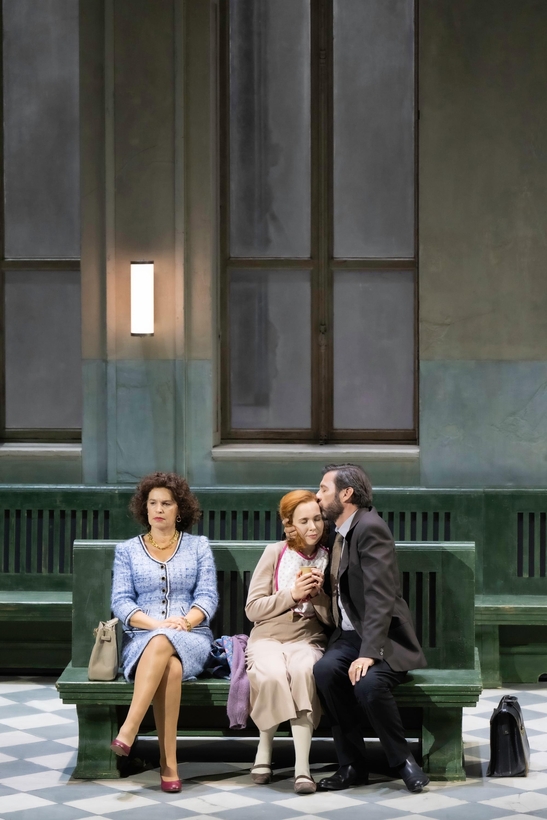Say Louise, and veteran opera fans flash on “Depuis le jour,” an aria of rapturous sensual awakening by one Gustave Charpentier, a composer-librettist otherwise unknown. Last summer, a spellbinding revival of Charpentier’s “novel in music” at the Festival d’Aix-en-Provence, filmed live on July 11, revealed that Louise’s awakening is a dream. Nightmare reality lurks just around the corner.
The Opéra Comique premiered Louise on February 2, 1900, deliberately positioning it as the first opera of the 20th century. The implied break with the past seems ambiguous. Like the nostalgic La Bohème (1896), which is set in the 1830s, Louise takes place in a lively, low-rent Parisian quarter of Montmartre—but in the grittier Montmartre of Charpentier’s contemporaries. Like Puccini’s dreamy Mimì, who embroiders flowers in her lonely garret, Louise plies her needle for a living—but in a sweatshop, sewing dresses.

And like Puccini’s Rodolfo, Louise’s neighbor Julien is a poet—but also much more. Indeed, it’s no exaggeration to see him as the personification of Paris in all its promise, the leviathan Paris of Balzac. Charpentier encodes the association in a brave flourish teetering between major and minor, which is played by the orchestra in the opening bars of the score, then immediately taken up by Julien. The motif weaves through Charpentier’s tapestry the way Berlioz wove his celebrated musical idée fixe through his Symphonie Fantastique.
If only Louise, like Mimì, were a free spirit, unbound by family ties, living on her own. But no. We meet her locked into a No Exit love-hate scenario with her parents. How can Louis leave Dad, who thinks she walks on water? Or even Mom, though Mom beats her? But Julien keeps serenading, and in Act Two, Louise bolts from the sweatshop to join him. Cue “Depuis le jour,” and Louise’s surreal Act Three coronation as the carnival queen of Montmartre—until Mom drags her back to her sick Dad, who in Act Four goes full King Lear.

Disdaining the Paris of postcards, the director Christof Loy situates Louise in the reception area of what might be a modern psychiatric hospital. The imagery befits the pathology of Louise’s dysfunctional family, but the heartbeat of the show lies in the acting. Until Act Four, Elsa Dreisig’s fetching girlishness and transparent lyric soprano mask, yet not entirely, the turmoil boiling beneath the surface. As Julien, the strapping tenor Adam Smith projects the jubilant erotic possibilities Charpentier means him to.
Has Dad crossed a line with Louise? We can’t tell, but their initial folie à deux is unnerving, and the marked physical resemblance between Smith and the bass Nicolas Courjal as Louise’s father only raises the stakes. The mezzo Sophie Koch gives a blistering account of Louise’s embittered mother.
Some 40 supporting players contribute to the distinctive novelistic texture Charpentier set out to create; like the principals, the ensemble makes an excellent showing. And kudos in spades to the conductor Giacomo Sangripanti, who summons up a depth of colors and symphonic sweep that point (though some will think it heresy to say so) to Debussy’s epic Pelléas et Mélisande (1902) and La Mer (1905).
Louise is available for streaming on arte.tv. Depending on the region, access may require a virtual private network
Matthew Gurewitsch writes about opera and classical music for AIR MAIL. He lives in Hawaii

